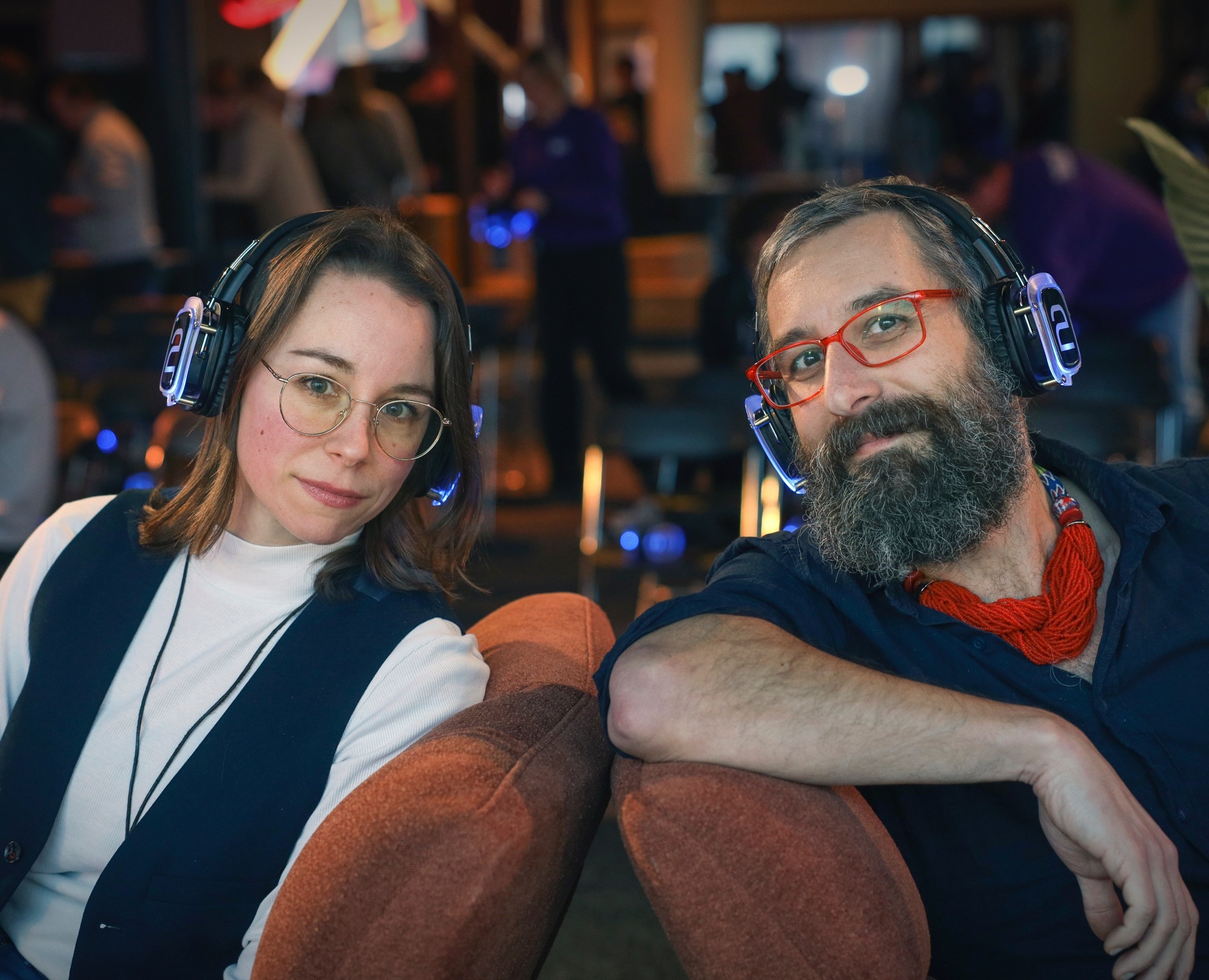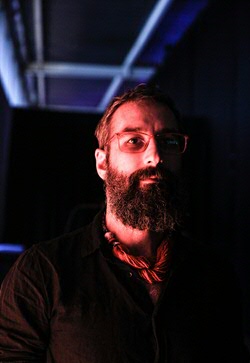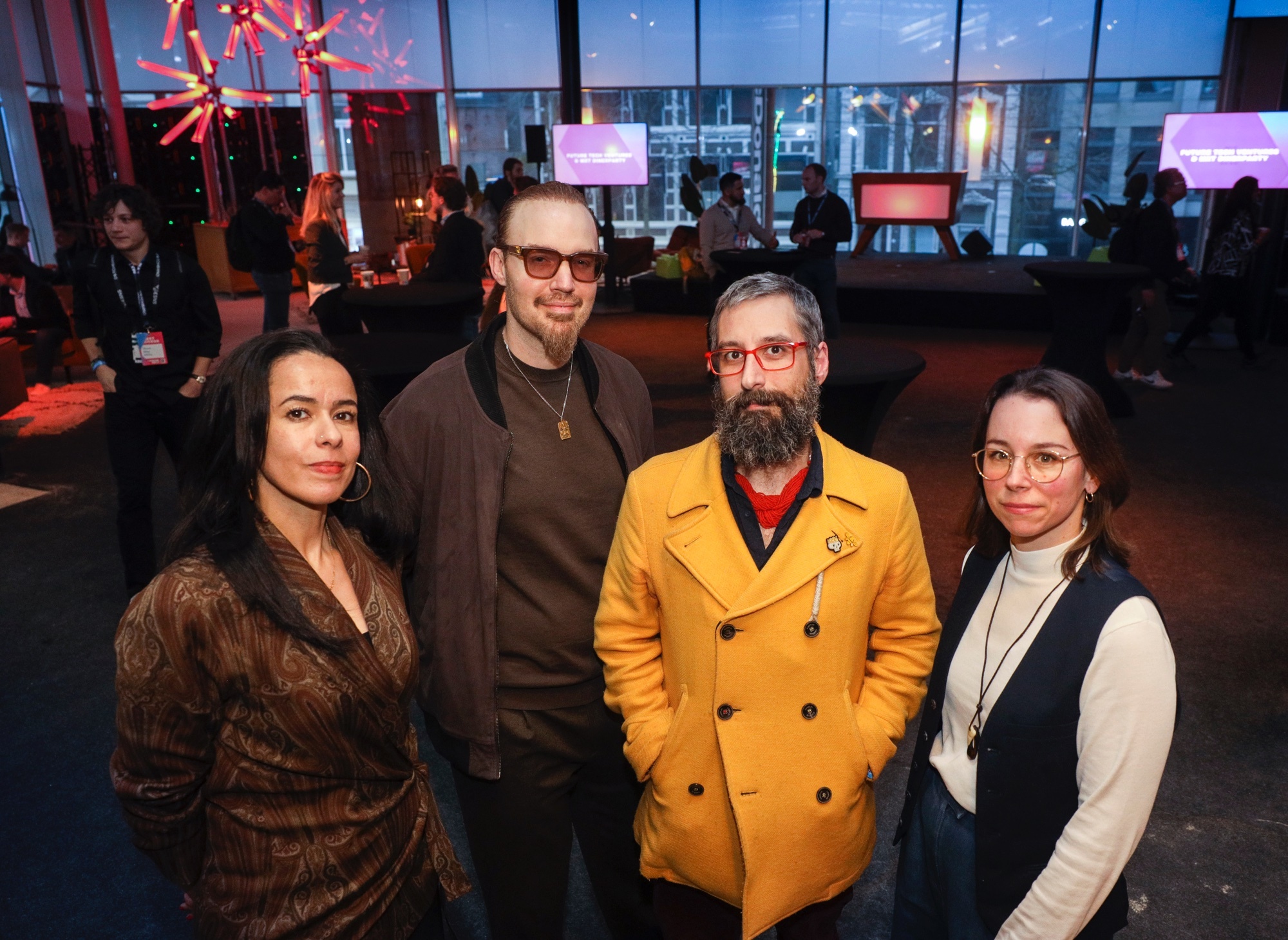Can binaural beats help you to focus and relax? These researchers are trying to find out
Reduce stress, improve concentration, increase intelligence: tens of thousands of videos on YouTube claim to offer all kinds of health benefits using so-called binaural beats. Is this claim really true? That is what researchers Kirsten van den Bosch and Tassos Sarampalis of the Faculty of Behavioural and Social Sciences are trying to find out. They received an XS grant from the Dutch Research Council to do so.
Text: Thomas Vos, Corporate Communications / Photos: Henk Veenstra
‘Pure 40 HZ Binaural Beats: The Frequency for FOCUS, MEMORY, and CONCENTRATION’ (27 million views), or ‘Confidence, Happiness & Motivation – Binaural Beats…’ (7 million views): these are just some of the YouTube results if you search for ‘binaural beats’. The rather in-your-face health claims are promising. Who does not want to put on headphones and automatically become happier, more focused, and motivated.
Sound research
Throughout her career, Kirsten van den Bosch has been studying soundscapes in real-life situations. Even though in the past she also worked as a consultant for municipalities and music festivals, she has mainly been active in academia. Tassos Sarampalis, who has a background in psychology, has researched how people process the basic components of sound, among other things. The central body of his current work involves figuring out how cognitive and perceptual interactions lead to improved speech understanding for people with auditory devices.

Delic & Huda
Before the idea to study binaural beats came about, Van den Bosch and Sarampalis were working on another research project. Sarampalis: ‘Kirsten and I were researching how people navigate auditory environments and how this affects, for example, education. In 2023, I was approached by Delic & Huda, an artist duo that works with music and sounds, among other things.’ Van den Bosch: ‘They created an interactive art installation called ReCharge, which is now on display at Museum De Fundatie in Zwolle. It’s an inflatable dome with beanbags on the floor. Visuals are projected in 360 degrees and they resonate with the music you hear through your headphones. Delic & Huda embedded different frequencies of binaural beats in this music and wanted to see if and how this affects people.’
The phantom frequency

But what exactly are binaural beats? Van den Bosch: ‘Delic actually describes it nicely, I think, by calling it a phantom frequency. You can only hear it through stereo headphones. You have one tone played in one ear and a slightly different, somewhat higher or lower tone in the other ear. For example: 400 Hz in one ear and 420 Hz in the other. Your brain tries to make sense of these different inputs and, in this case, most people’s brains will perceive a tone of 20 Hz. In addition, the sound pulsates a little, even though it will sound like a flat tone when you listen to either the left or the right. It’s an auditory illusion.’
Let’s have a listen. Grab some headphones with stereo functionality—most headphones will suffice—and play the following audio fragment to get an idea of what binaural beats sound like. Make sure the volume is high enough, but it should not feel too loud. Please note: not everybody will be able to experience the pulsating effect.
Why do you hear that pulsating sound? Sarampalis: ‘The specifics are always a bit mystifying, but it likely has to do with how the brain determines where sounds are coming from. In the brainstem and midbrain, you have a system that is responsible for comparing and combining information across the ears. This way, you can locate sounds in a physical space and the binaural beats illusion likely stems from this function.’
The big unknown
The research on binaural beats and their effects is very limited, Van den Bosch says: ‘And results can often be contradictory. Nevertheless, for the last twenty years or so, people have become more interested in the supposed effects. The leading hypothesis is that the frequencies of our brain waves resonate with the frequencies of the binaural beats as vibrations often synchronize in nature. Some say this boosts creativity or concentration and reduces anxiety and symptoms of depression, and there are studies out there that confirm these behavioural outcomes. However, other studies fail to replicate the same results and, so far, proof for this hypothesis hasn't been found by using EEG or other brain imaging techniques. We don’t exactly know if, when, and for whom it works. Which is exactly why it’s interesting for us to research it further. It’s the big unknown.’
Wishful thinking

The request of Delic & Huda to get more information on the effects of binaural beats formed a good starting point for the research study. However, Van den Bosch and Sarampalis are sceptical about these supposed effects. Sarampalis: ‘There is a lot of wishful thinking within the existing research. Listening to binaural beats is in itself very easy. Anybody can do it anywhere in the world at any time. For most people, it sounds very promising and it’s fascinating on an applied level. However, from the perspective of sound research, it’s extremely baffling. All of this makes me remarkably sceptical. We’re approaching this with a lot of excitement and an open but critical mind.’
200 test subjects
There is only one way to find out: by testing it. Van den Bosch: ‘We did some preliminary tests in the lab with Honours College students to see if they reported having a better concentration and working memory. The results were a bit ambiguous, but it provided Delic & Huda and us with great input for methodological improvements. In the meantime, we were awarded an XS grant for our research by the Dutch Research Council. This summer, we want to scale up the art installation so we can test around 200 people simultaneously using Delic & Huda’s work of art. We’ll use silent disco headphones, which allow us to offer different test subjects different conditions at the same time. For example, we can let one part of the audience listen to binaural beats, while the other half doesn’t hear them. This way, we can hopefully find out whether—on top of the effects of interacting with the installation itself—binaural beats have an additional effect.’
Behavioural tasks
Afterwards, participants will perform short behavioural tasks and report on their experiences. Van den Bosch: ‘With the behavioural tasks, we can, for example, measure accuracy and reaction time, whereby the report on their experience gives us insight into relaxation, among other things. And these are exactly the effects binaural beats often claim to have.’

Art as it is intended
All scepticism aside, Van den Bosch and Sarampalis are still hoping for interesting results. Sarampalis: ‘We’re doing our experiment in a very controlled environment using the proper methods. I’m curious to see whether we’ll be able to observe something that might be informative.’ Van den Bosch: ‘The research field on this topic has matured in the last five years or so. It would be great to be able to add to that with good results from a controlled, real-world setting, instead of a lab. Working with art in the way it’s intended. I'm very appreciative of Delic & Huda wanting to involve us as researchers.’
More information
-
Interested in Delic & Huda’s work of art? ReCharge is on display as part of the RESET exhibition at Museum De Fundatie in Zwolle until 16 March 2025.
-
Read more about the NWO XS Grant that was awarded.
| Last modified: | 18 February 2025 4.08 p.m. |
More news
-
15 April 2025
Impact gaswinningsproblemen op Groningers: negatieve ontwikkeling zet niet door, maar meerdere keren schade blijft een punt van zorg
Impact gaswinningsproblemen op Groningers: negatieve ontwikkeling zet niet door, maar meerdere keren schade blijft een punt van zorg
-
17 March 2025
Liekuut | The high price of conflicts
According to Carsten de Dreu, Professor of Foundations of Cooperation and Social Organization at the University of Groningen, a lot can be learned from conflicts.
-
10 March 2025
Science for Society | Memory Lab for higher marks
Learning facts at school is something hardly anyone likes. The day before a test, pupils cram as many words or names as possible into their heads, only to hopefully remember them the next morning and then forget them again after the test.
